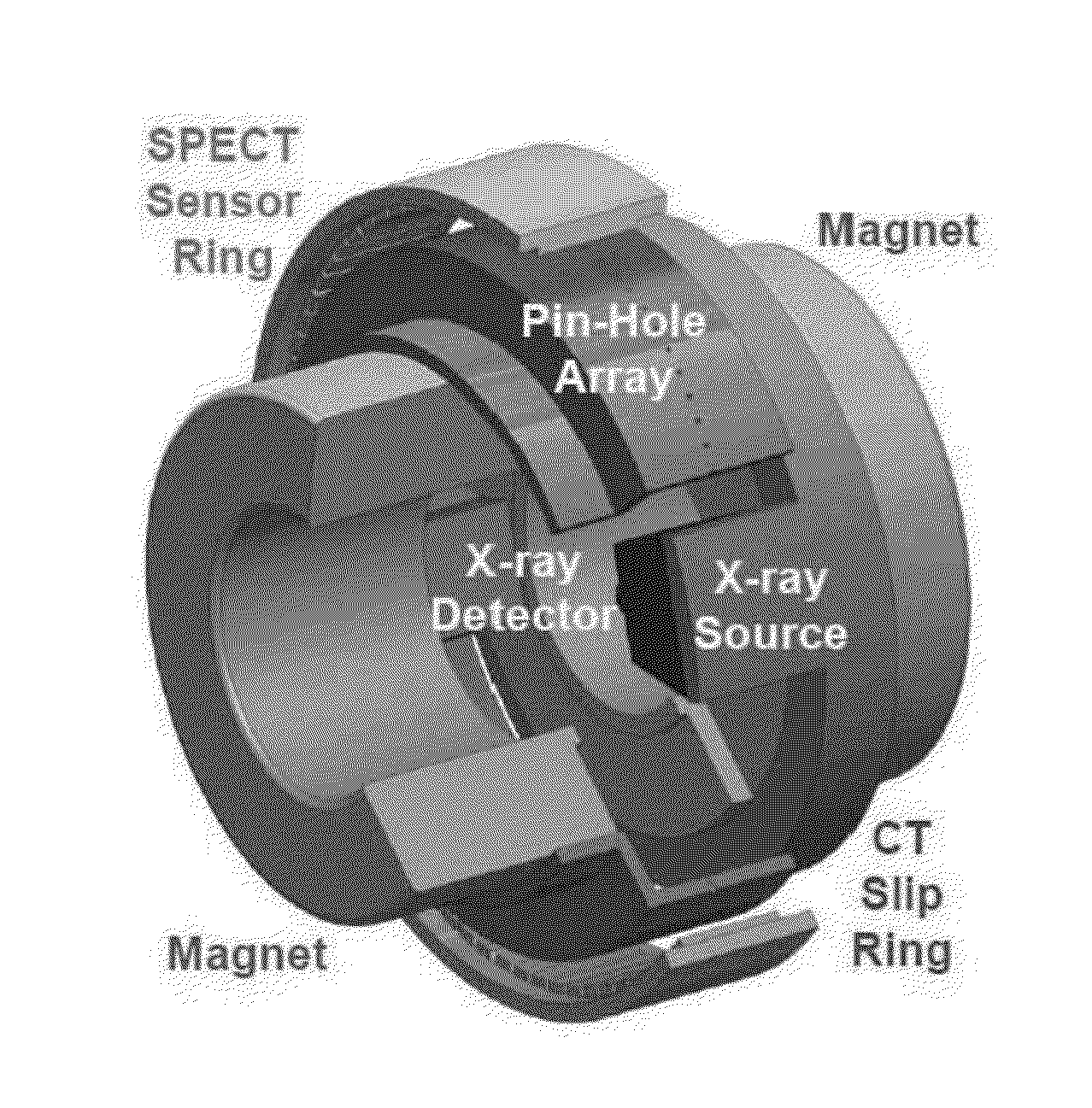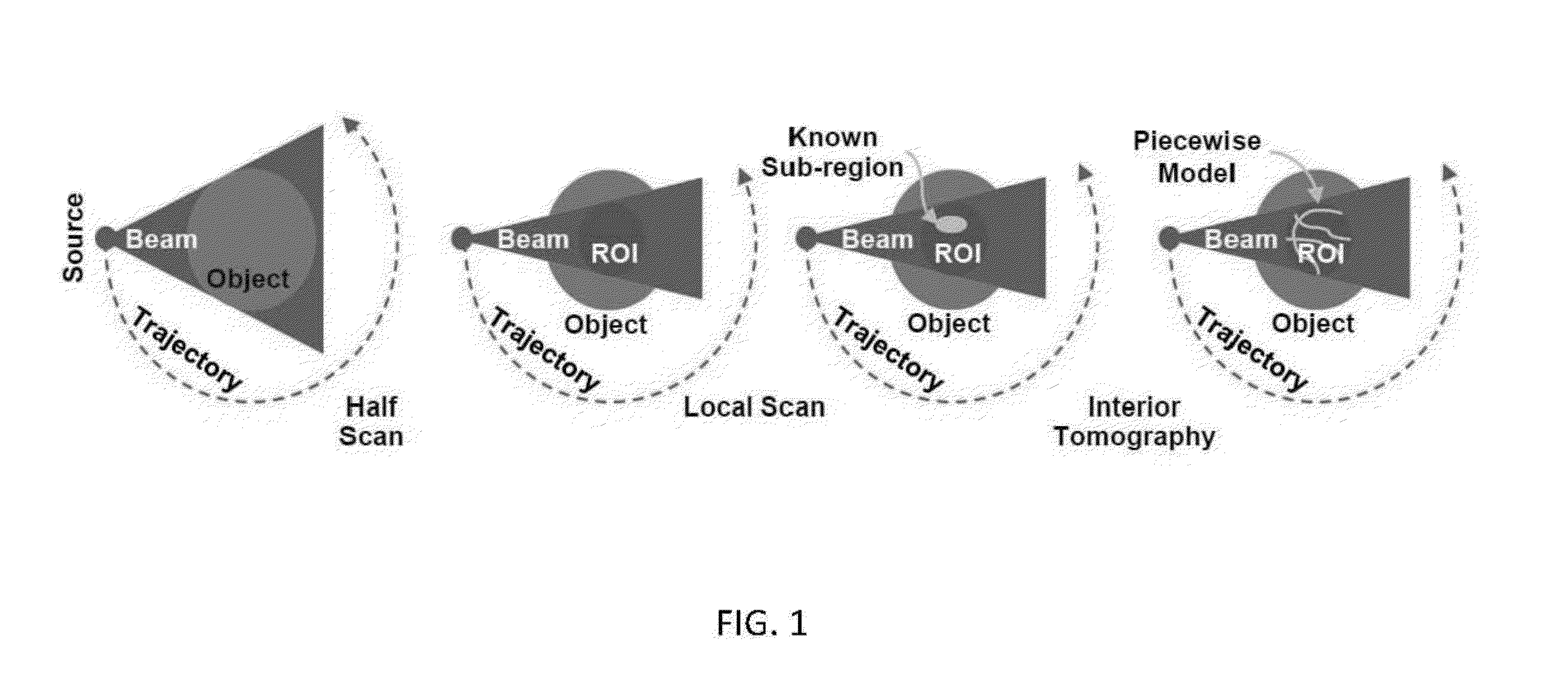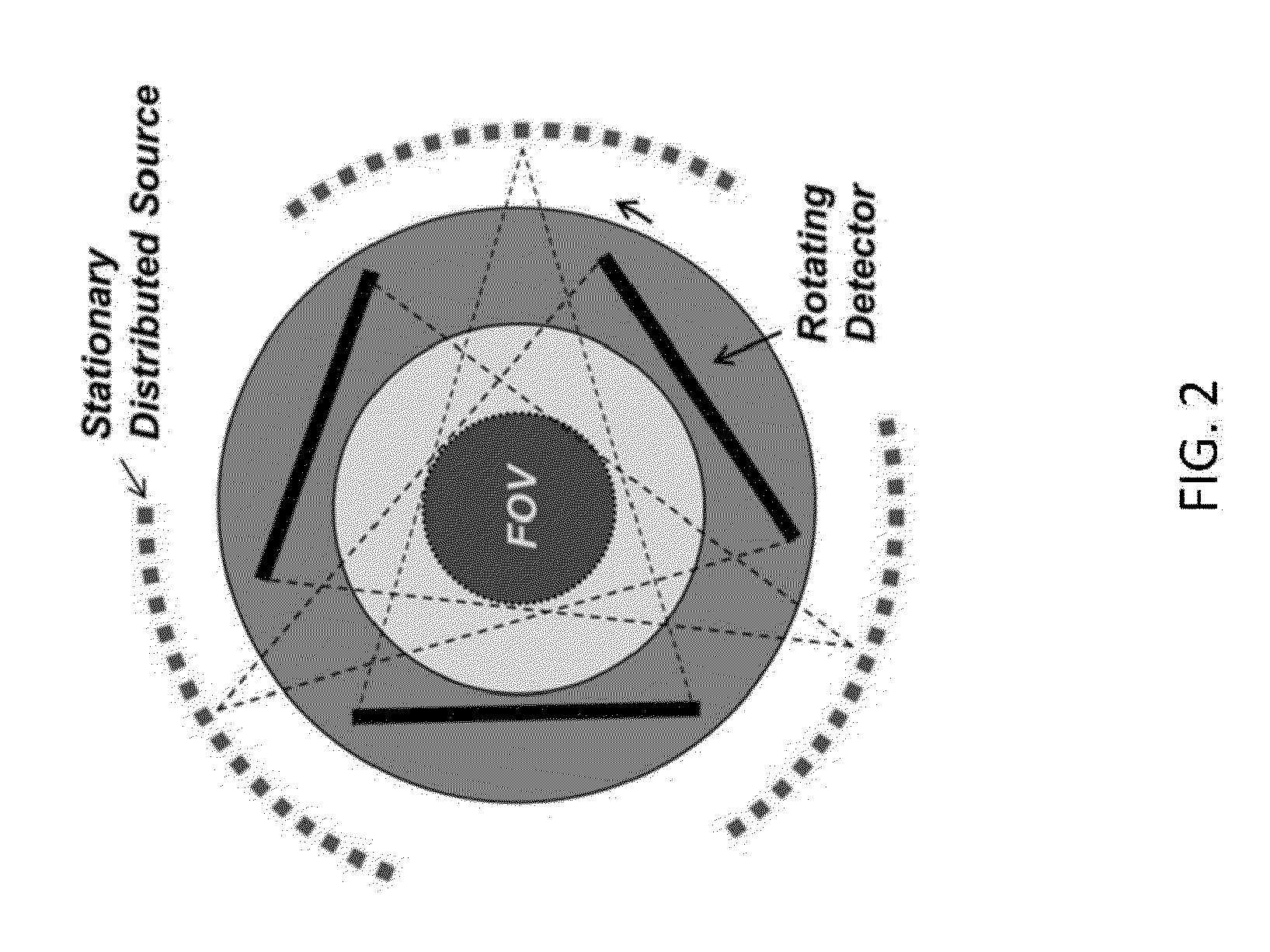Stationary source computed tomography and ct-mri systems
a computed tomography and station source technology, applied in the field of computed tomography, can solve the problems of difficult to uniquely reconstruct an roi from truncated local data, many important problems are localized, and the radiation dose is reduced, so as to speed up the temporal resolution and speed up the resolution
- Summary
- Abstract
- Description
- Claims
- Application Information
AI Technical Summary
Benefits of technology
Problems solved by technology
Method used
Image
Examples
examples
[0102]Cardiovascular computed tomography (CVCT) has been successfully applied for the diagnosis of a series of heart diseases. However, the limitations of temporal and spatial resolution and radiation dose inhibit the utilization of CVCT for more clinical applications. The specific primary bottlenecks of the current CVCT include the difficulties of the synchronization with high or arrhythmic heart rates, the inability to measure blood flow, the detection of vulnerable plaques, the separation of calcium from iodine signals, the study of myocardial micro-vascular structure and perfusion, as well as the risk of ionizing radiation exposure. The recent technical innovations in the fields of x-ray sources and reconstruction methods indicate the immense potential for CVCT advancement. An innovative cardiac CT architecture is provided to overcome these obstacles, which systematically integrates carbon nanotube (CNT) x-ray sources and interior tomography methods. This novel architecture can ...
PUM
 Login to View More
Login to View More Abstract
Description
Claims
Application Information
 Login to View More
Login to View More - R&D
- Intellectual Property
- Life Sciences
- Materials
- Tech Scout
- Unparalleled Data Quality
- Higher Quality Content
- 60% Fewer Hallucinations
Browse by: Latest US Patents, China's latest patents, Technical Efficacy Thesaurus, Application Domain, Technology Topic, Popular Technical Reports.
© 2025 PatSnap. All rights reserved.Legal|Privacy policy|Modern Slavery Act Transparency Statement|Sitemap|About US| Contact US: help@patsnap.com



